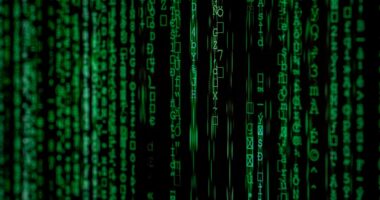NFTs (non-fungible tokens) are unique digital assets stored on a blockchain, which is a decentralized and distributed digital ledger. Unlike fungible cryptocurrencies such as Bitcoin or Ethereum, NFTs are non-interchangeable, with each token possessing distinct characteristics. The introduction of NFTs has significantly impacted the digital art market.
Artists can now create and sell digital artwork as NFTs, maintaining ownership and control over their creations. This development has provided new monetization opportunities for artists in the digital realm. Collectors and art enthusiasts can purchase and own digital artwork as NFTs, with ownership and authenticity records stored on the blockchain.
This has led to increased interest and investment in digital art, as NFTs offer a secure and transparent method for buying, selling, and trading digital artwork. The emergence of NFTs has prompted discussions about the value of digital art and the concept of ownership in the digital age. NFTs enable artists to create scarcity and exclusivity for their digital artwork, a feat previously challenging in the digital domain.
This has resulted in a reassessment of digital art’s value and its position in the art market. As NFTs continue to gain popularity, they have the potential to transform the creation, purchase, and sale of digital art.
Key Takeaways
- NFTs are unique digital assets that represent ownership of a specific item or piece of content, such as digital art, in the digital world.
- Creating your own NFT involves choosing a platform, minting the NFT, setting a price, and listing it for sale in a marketplace.
- NFT jobs and opportunities in the crypto industry include roles such as NFT artist, developer, marketer, and curator, as well as opportunities in NFT marketplaces and platforms.
- Blockchain and cryptocurrency play a crucial role in NFT creation by providing a secure and transparent way to verify ownership and transfer of digital assets.
- Bitcoin (BTC) has the potential to revolutionize NFT creation by offering a decentralized and secure platform for creating and trading digital art.
- Tips for marketing and selling your NFT artwork include building a strong online presence, engaging with the NFT community, and leveraging social media and NFT marketplaces.
- The future of NFTs and digital art creation in the crypto world is promising, with potential for continued innovation, expansion of NFT use cases, and increased mainstream adoption.
The Process of Creating Your Own NFT
Choosing Your Digital Artwork
Creating your own NFT can be an exciting and rewarding process, but it requires careful planning and execution. The first step in creating an NFT is to choose the digital artwork that you want to tokenize. This could be a piece of digital art, a video, an audio file, or any other type of digital content.
Minting Your NFT
Once you have selected your artwork, you will need to choose a platform to mint your NFT. There are several NFT marketplaces and platforms that allow artists to mint and sell their NFTs, each with its own set of features and requirements. After choosing a platform, you will need to create a digital wallet to store your NFT and any cryptocurrency that you may earn from its sale. This wallet will also be used to pay for the gas fees associated with minting your NFT on the blockchain. Once your wallet is set up, you can proceed to mint your NFT by following the platform’s instructions and paying the necessary fees.
Post-Minting Considerations
After minting your NFT, you can list it for sale on the platform and set a price for potential buyers. However, it’s important to note that creating an NFT involves more than just minting a token. You will also need to consider factors such as copyright, licensing, and royalties for your artwork. Additionally, marketing and promoting your NFT is crucial for attracting potential buyers and maximizing its value.
Success in the Digital Art Market
By carefully considering these factors and following the necessary steps, you can successfully create and sell your own NFT in the digital art market. With the right approach, you can unlock the full potential of your digital artwork and reap the rewards of being an NFT creator.
NFT Jobs and Opportunities in the Crypto Industry

The rise of NFTs has created new job opportunities in the crypto industry, as the demand for professionals with expertise in blockchain technology, digital art, and NFT marketplaces continues to grow. One of the most sought-after roles in the NFT space is that of an NFT artist or creator, who is responsible for producing unique and high-quality digital artwork that can be tokenized as NFTs. NFT artists often work closely with blockchain developers and platform operators to ensure that their artwork is properly minted and showcased on NFT marketplaces.
Another key role in the NFT industry is that of an NFT marketer or promoter, who is responsible for raising awareness and generating interest in NFT artwork. This may involve creating marketing campaigns, engaging with potential buyers and collectors, and building a strong online presence for the artist or their work. Additionally, there is a growing demand for professionals with legal expertise in copyright and intellectual property law, as well as individuals with experience in managing royalties and licensing agreements for NFT artwork.
As the NFT market continues to evolve, there will likely be an increased demand for professionals with skills in blockchain development, smart contract programming, and decentralized finance (DeFi). These individuals play a crucial role in developing and maintaining the infrastructure that supports NFT creation, trading, and ownership on the blockchain. Overall, the rise of NFTs has created a wide range of job opportunities in the crypto industry, making it an exciting time for professionals looking to enter this rapidly growing field.
The Role of Blockchain and Cryptocurrency in NFT Creation
Blockchain technology and cryptocurrency play a central role in the creation of NFTs, providing the infrastructure needed to tokenize digital artwork and facilitate its sale on the open market. Blockchain technology serves as a decentralized ledger that records all transactions related to an NFT, including its creation, ownership transfers, and sales history. This ensures transparency and immutability, as all information related to an NFT is stored on the blockchain and cannot be altered or tampered with.
Cryptocurrency also plays a crucial role in NFT creation, as it is used to pay for gas fees associated with minting an NFT on the blockchain. Gas fees are transaction fees paid to miners on the blockchain network to process and validate transactions. These fees can vary depending on network congestion and the complexity of the transaction being processed.
Cryptocurrency such as Ethereum (ETH) is commonly used to pay for gas fees when minting NFTs, making it an essential component of the NFT creation process. In addition to facilitating the creation and sale of NFTs, blockchain technology and cryptocurrency also provide a secure and efficient way to verify ownership and authenticity of digital artwork. Each NFT is assigned a unique identifier that is stored on the blockchain, allowing collectors and buyers to verify its provenance and ownership history.
This has helped to address issues of copyright infringement and piracy in the digital art market, providing artists with greater control over their work and ensuring that they are fairly compensated for their creations.
Exploring the Potential of Bitcoin (BTC) in NFT Creation
While Ethereum (ETH) has been the dominant blockchain for NFT creation due to its smart contract functionality, there is growing interest in exploring the potential of Bitcoin (BTC) in the NFT space. Bitcoin’s emergence as a viable platform for creating and trading NFTs has been driven by developments such as the Lightning Network, which enables faster and more cost-effective transactions on the Bitcoin blockchain. This has opened up new possibilities for using Bitcoin as a platform for minting and trading NFTs.
One of the key advantages of using Bitcoin for NFT creation is its widespread adoption and recognition as a store of value. Bitcoin’s status as the original cryptocurrency has made it a highly sought-after asset among investors and collectors, which could translate into increased demand for Bitcoin-based NFTs. Additionally, Bitcoin’s security features and robust network infrastructure make it an attractive option for artists looking to tokenize their work as NFTs.
As interest in Bitcoin-based NFTs continues to grow, there is potential for new marketplaces and platforms to emerge that cater specifically to Bitcoin-based NFTs. This could open up new opportunities for artists and collectors who prefer to transact using Bitcoin rather than other cryptocurrencies. While Ethereum remains the dominant platform for NFT creation at present, it will be interesting to see how Bitcoin’s potential in the NFT space continues to develop in the future.
Tips for Marketing and Selling Your NFT Artwork

Marketing and selling your NFT artwork requires careful planning and execution to maximize its value and appeal to potential buyers.
Building an Online Presence
One important aspect of marketing your NFT artwork is building a strong online presence through social media platforms, artist websites, and online galleries. This can help you reach a wider audience of potential buyers and collectors who are interested in purchasing your work as an NFT.
Engaging with Your Audience
Additionally, engaging with your audience through regular updates, behind-the-scenes content, and interactive experiences can help build excitement around your artwork. Collaborating with other artists or influencers in the crypto space can also help raise awareness of your NFT artwork and attract new buyers. By partnering with individuals who have a strong following or influence within the crypto community, you can leverage their reach to promote your work to a larger audience.
Pricing and Incentives
When it comes to selling your NFT artwork, pricing is an important consideration that can impact its success on the market. It’s important to carefully consider factors such as scarcity, demand, and market trends when setting a price for your NFT. Additionally, offering incentives such as limited edition releases or exclusive perks for buyers can help create a sense of urgency and exclusivity around your artwork.
The Future of NFTs and Digital Art Creation in the Crypto World
The future of NFTs and digital art creation in the crypto world holds great promise as technology continues to evolve and new opportunities emerge. One area of potential growth is the development of decentralized autonomous organizations (DAOs) that are focused on supporting artists and creators in the NFT space. DAOs are community-governed organizations that use blockchain technology to make decisions about funding, governance, and operations.
In the context of NFTs, DAOs could provide artists with access to funding, resources, and support from a global community of collectors and enthusiasts. Another exciting development is the integration of virtual reality (VR) technology with NFTs, which could open up new possibilities for immersive art experiences in the digital realm. By combining VR technology with NFTs, artists can create interactive and multi-dimensional artworks that offer a unique viewing experience for collectors.
This could lead to new forms of artistic expression that push the boundaries of traditional art mediums. As blockchain technology continues to mature, there is also potential for greater interoperability between different blockchain networks, allowing for seamless transfer of assets across platforms. This could lead to increased liquidity and accessibility for NFTs, making it easier for collectors to buy, sell, and trade digital artwork across different marketplaces.
Overall, the future of NFTs and digital art creation in the crypto world is filled with possibilities for innovation and growth. As technology continues to advance and new use cases emerge, we can expect to see continued evolution in how we create, buy, sell, and experience digital art in the blockchain era.
FAQs
What is an NFT?
An NFT, or non-fungible token, is a digital asset that represents ownership or proof of authenticity of a unique item or piece of content, such as digital art, videos, music, or other digital files.
How do you create your own NFT?
To create your own NFT, you will need to choose a blockchain platform that supports NFTs, such as Ethereum or Binance Smart Chain. Then, you will need to create a digital wallet, mint your digital artwork or content as an NFT, and list it for sale on a marketplace that supports NFTs.
What is the process of minting an NFT?
Minting an NFT involves uploading your digital artwork or content to a blockchain platform, adding metadata and other details about the item, and then creating a unique token that represents ownership of the item.
What are the costs associated with creating an NFT?
The costs associated with creating an NFT include gas fees for minting the NFT on the blockchain, transaction fees for listing the NFT on a marketplace, and potentially fees for using a platform to create and manage the NFT.
What are some popular marketplaces for selling NFTs?
Popular marketplaces for selling NFTs include OpenSea, Rarible, Foundation, and SuperRare. These platforms allow creators to list and sell their NFTs to potential buyers.
What are the benefits of creating and owning an NFT?
Creating and owning an NFT can provide artists and creators with a new way to monetize their digital artwork and content, as well as a way to prove ownership and authenticity of their work through blockchain technology. NFTs also allow for the potential for royalties to be paid to creators each time their NFT is sold or traded.





